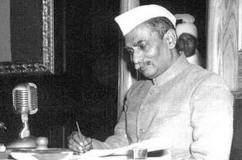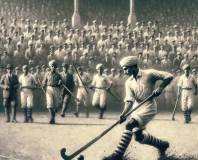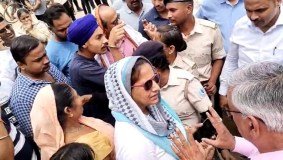In Hindu Dharma, time is known as Kaal (Kaala) and is said to be cyclical in nature. Hindu seers observed the Rta (cosmic cycle) to develop the concept of Kaal. Our ancestors also recognized that time varied in various worlds and hence, earthly time wasn’t considered absolute. They also made a clear distinction between the earthly time of humans and the cosmic time of Hindu Devis & Devatas.
Since Devis and Devatas were immortal, they are subject to a different time frame and also have their own periods of rest and activity. The expansion of the world is caused when Parabrahma (Supreme Brahman) awakens to manifest the objective world and withdraws the entire creation into Himself when it is time for Him to rest.
It is worth noting that another meaning of Kaala in Hindu Dharma is death. Therefore, Yama Dharmaraja, the deity of death, personifies time. Death, however, is only for the physical body as the soul is considered immortal.
Important Hindu beliefs about time
The cyclical pattern of time manifests in the days, weeks, months, seasons, and yugas experienced by humans. It is a never-ending process that is repetitive as well as exhaustive. While it is limited in this sense, it is eternal from the spiritual perspective.
Srishti (creation), Stithi (continuation), and Laya (dissolution) are the three components of every time cycle. Rishi Ganita, who has been mentioned in the Mahabharat and Manusmriti, has been credited with calculating Hindu time. It was Rishi Ganita who calculated in terms of human years the duration of each cycle.
The lifespan of Brahmadev is 100 years which is known as Mahakalpa and translates to 311.04 trillion human years. One year on earth equals a day of the Devas whose day is Uttarayan and night is Dakshinayan.
Hindu time divisions
A complete day of Brahmadev comprising a day and a night (4.32 billion human years each) equalling 8.64 billion human years is known as a Kalpa. 360 Kalpas (about 3.11 trillion human years) together make a year of Bhagwan Brahma. 100 Brahma years (approximately 311.04 trillion human years) is known as a Mahakalpa.
Every Kalpa comprises 1000 Mahayugas and each Mahayuga is divided into four yugas (ages). The four yugas are Satya/Krita yuga (1.728 million human years), Treta (1.296 million human years), Dwapar (864000 human years), and Kali (432000 human years). 71 Mahayugas add up to form a Manvantara which equals about 308 million human years.
Manvantara is derived from Manu who rules the earth during this period. Every Manvantara has a Manu, an Indra, and Sapta Rishis. Each Kalpa has 14 Manus in all and we are currently under the rule of Vaivasvata Manu, the seventh Manu. We are presently in the Kali Yuga which began after Bhagwan Krishna left the earth.
Truti (one twinkle of an eye) is the smallest unit of time. Ahoratra (day & night together) comprise 30 muhurtas each muhurta being approximately 45-50 minutes long. Each month (Masa) is 30 days long and divided into two pakshas of 15 days each. The bright fortnight from New Moon to Full Moon is called Shukla Paksha and the dark fortnight from Full Moon to New Moon is known as Krishna Paksha.
Ayana traces the path of the sun. The six-month period when the sun travels from South to North (Capricorn to Cancer) is called Uttarayan and Dakshinayan is the sun’s journey back from North to South (Cancer to Capricorn). The two ayanas together add up and form a year. Every Hindu year has a specific name which follows a 60-year cycle. The names will repeat every sixty years.
Hindu granthas mention six seasons – Vasant (spring), Grishma (summer), Varsha (rainy), Sharad (autumn), and Hemant (winter). Chaitra (Mesha), Vaishaka (Vrishabha), Jyeshta (Mithun), Ashadh (Kark), Shravan (Simha), Bhadrapad (Kanya), Ashvin (Tula), Kartik (Vrschik), Agrahyana (Dhanush), Paushta (Makar), Magh (Magha), and Phalguna (Meen) are the 12 Hindu months and their corresponding zodiac sign
(Featured Image Source: Bihari Voice)
(This story has been reproduced here with permission from Hindu Post.)























